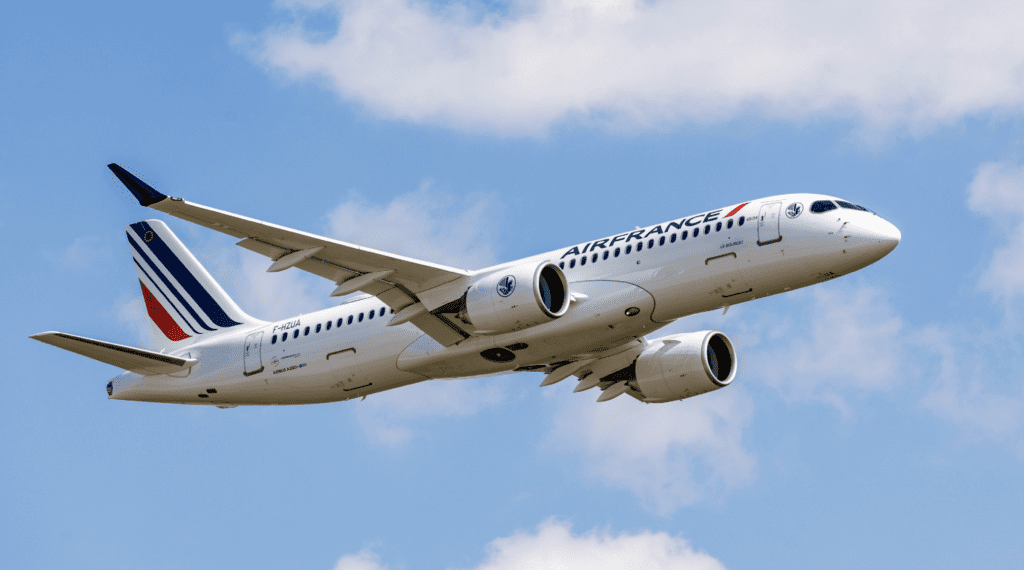
The Air France ACT program outlines the airline’s new CO2 emissions reduction strategy as part of the Paris Agreement objectives for decarbonization of the aviation industry. (Photo courtesy of Air France)
Air France is launching a new program to accelerate decarbonization, called “Air France ACT,” including a three-part strategy. The first aims are to reduce direct and indirect CO2 emissions from Air France’s operations; the third priority is to support projects that absorb CO2 from the atmosphere. Air France is targeting a 30% reduction in CO2 per passenger/kilometer over the span from 2019 to 2030.
The Air France ACT program is part of the airline’s participation in achieving the objectives spelled out in the Paris Agreement. According to the announcement from Air France, the complicated process of decarbonizing aviation “relies on close cooperation between the different stakeholders: aircraft manufacturers, engine manufacturers, fuel suppliers, airports, air traffic control, public authorities, research institutes and academia.”

Pictured: Air France’s first Airbus A350 (Photo courtesy of Air France)
Sustainable aviation fuel (SAF) will be an important factor in Air France’s decarbonization mission. The new program includes a plan to incorporate at least 10% SAF on all of its flights by the year 2030. The longer-term goal is to use 63% SAF on all flights by 2050. SAF has the capacity to reduce CO2 emissions by an average of 80% over the fuel life cycle. As of this year, Air France has already incorporated 1% SAF on all flights departing from France (in accordance with the country’s regulations).
Another part of Air France’s decarbonization strategy is in fleet renewal. They expect that the more fuel-efficient Airbus A220 and A350 aircraft will make up 70% of the fleet by 2030, compared to just 7% now. These two models from Airbus emit up to 25% less CO2, and reduce noise footprint by an average of 33%.

The Airbus A220 and A350 are more fuel efficient and enable a 25% reduction in CO2 emissions. (Photo courtesy of Airbus)
Airbus is also working towards its own sustainability goals, including use of 100% SAF to fuel all operations by 2030. The company has already started to incorporate SAF on all aircraft deliveries from its final assembly line in Mobile, Alabama. So far, all of Airbus’ aircraft have been approved to run on blends of up to 50% SAF. Airbus VP of Research and Technology, Amanda Simpson, told Avionics International in a recent interview that their team has performed “demonstrations with an A350 and an A319 to show that we can fly aircraft on 100% SAF.”
The Air France ACT program will be a long-term strategy, and the company will define “a precise and verifiable decarbonisation trajectory for 2050, based on a set of hypotheses—notably concerning an evolution of traffic—which may vary. Therefore, this is an evolving process, guided by the ambition to be in line with the scientific benchmarks, as is the case for the trajectory for 2030.”
Along with increasing use of SAF and introducing more fuel-efficient aircraft into its fleet, Air France is employing so-called “eco-piloting techniques” to achieve its decarbonization goals. This means that pilots will taxi using only one engine when possible. The techniques also include, among other methods, “optimized flight paths using artificial intelligence (AI), and continuous descent in cooperation with the air traffic control authorities.” These techniques can reduce annual CO2 emissions by an average of 2 to 3%.